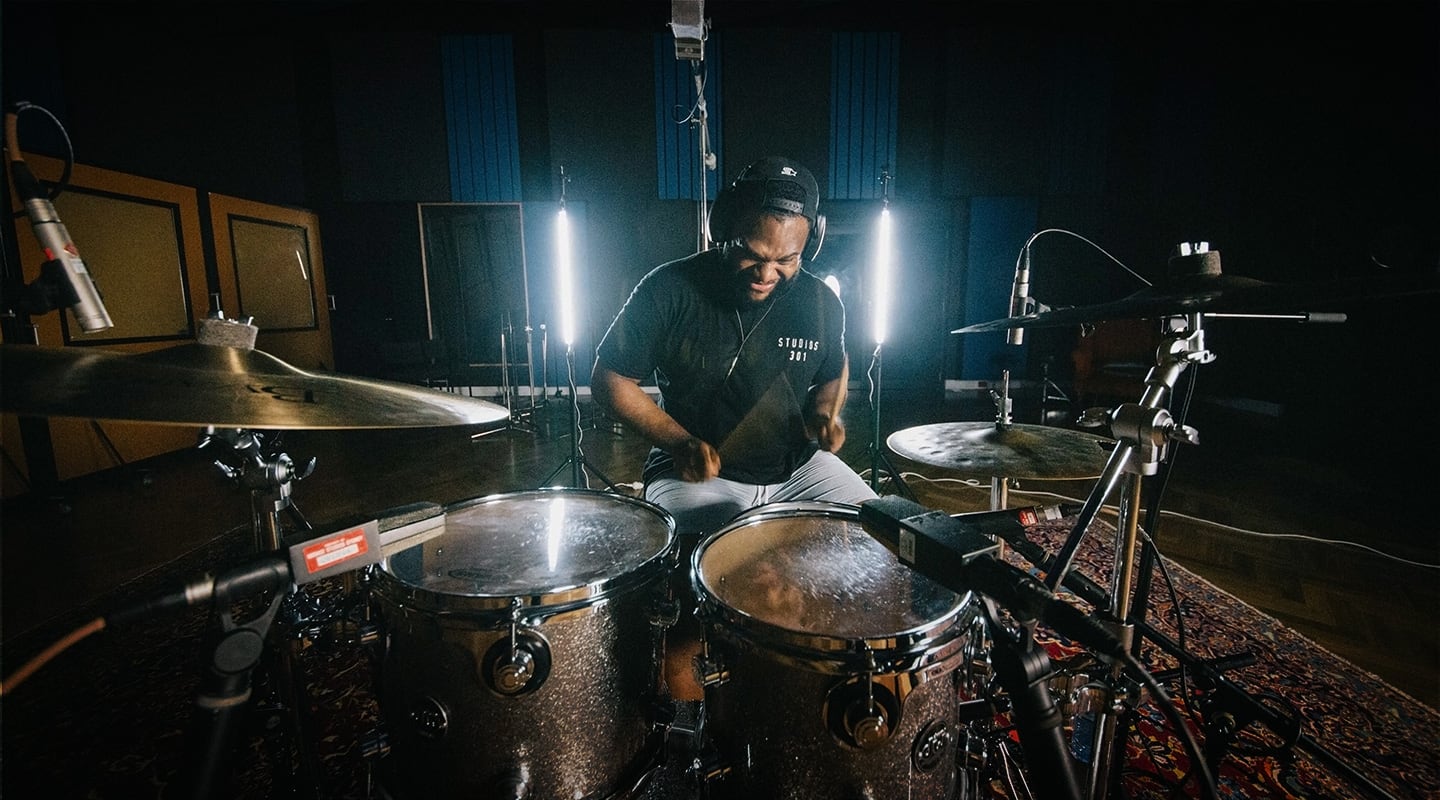
Studios 301 is Back!
Tom Misner has rescued Studios 301 from extinction and kept its run as Australia’s longest-operating studio going. Will it be more than just a rich man’s hobby project?
Some blokes have luxury cars, some blokes have real estate, some blokes have studios, some blokes have the lot. That’s Tom Misner; SAE founder, Studios 301 owner, and resident of the millionaire state, Monte Carlo. “I have all the luxury items in the world you can think of, but I still like building studios,” mused Misner. “It’s weird.”
It’s only weird because it’s a hobby the average income earner can’t afford. It’s his version of a model train set; impeccably sculpted to his specifications, with analogue consoles and vintage mics replacing period-correct station facades and heritage-variety plastic shrubbery.
Misner bills the new incarnation of Sydney’s Studios 301 as a philanthropic gesture. “I started making money in Australia, and when I sold SAE I made even more money,” he said. “This is like me giving back something.” He’s right in that there’s little expectation Misner will bank the sort of return a $12 million investment would typically net him. In his view, it’s philanthropic because building a world-class studio in Australia that no one else could afford to fund, will be a leg-up for local producers and engineers; allowing them to work at a “higher calibre”. In his regional Monaco parlance, he likened Australia’s lack of “truly world-class” facilities to “bringing a sports car to a Formula One race; you’re not going to win. This allows you to play on the big stage.”
While Misner concedes there have been many “okay” studios in Australia, (previous incarnations of 301 included) and still are, he’ll stomp all over his past efforts on his way to telling you how much better the new build is. “The old mixing room at 301 in Castlereagh St had an eight-foot ceiling. It was a joke,” he said. “Acoustically speaking, there’s nothing you can do with an eight-foot room. You can produce things out of it, but you have to get used to it.” Likewise there were “problems at 301 Alexandria. Things were good, other things weren’t so good. It had its run, it had its time.”
At least his claims are simpler to quantify this time. Unlike decoding his ownership stake of 301 over the years or estimating his net worth before the sale of SAE, there’s literal concrete proof of the size, scale and sound of Studios 301. It is world-class, at least on the inside. This isn’t set in the countryside like a Real World, occupying an old cathedral like Lyndhurst Hall, or stationed in a penthouse like Jungle City in New York. It’s still got to make a dollar in Australia’s toughest real estate market, which means 301 now sits at the end of a warehouse cul-de-sac, five minutes from Sydney’s International airport. What it is, is a studio with impeccable acoustics and a gobsmacking selection of gear that can handle any job, not just the big, small or esoteric ones.
IN THE LONG RUN
This is version four of Australia’s longest running studio, and one of the oldest in the world. The studio began when the smaller of two gramophone manufacturers who’d set up distribution in Australia took a gambit on the local entertainment industry. The Columbia Graphophone Company thought it’d be a savvy idea to establish a studio to record local content, and set up a space on the corner of Parramatta Road and Columbia Lane in Homebush in 1926. In 1954, the studios relocated to 301 Castlereagh Street, in Sydney, where it was given the EMI name by its now-merged parent company. Eventually the studio’s management bought it out and renamed it Studios 301. In 1998, Misner bought it. 301 was then relocated to 18 Mitchell Road in Alexandria, but kept the name. The ownership gets a bit uncertain around the time Misner sold SAE to Navitas in 2011. He eventually bought it back in 2017, just as the landlords were filing DAs with the council for an apartment complex on the site, hence the relocation to the current spot at 3 Ellis Avenue in Alexandria.
Misner reckons he’s built over 200 studios so far, which is probably not an exaggeration. While he may not have been as intimately involved with the others as with the current 301, he did preside over a rapidly-expanding SAE network of campuses, each with their own collection of studios. It’s his hobby; one he’s been trying to perfect for decades.
He took a special interest in this build, eager to get his sweet tooth stuck into building a candy factory. As soon as the lease was signed, he immediately began toiling over floor plans. Once he’d sketched out a rough layout, the plans would circulate between himself, the architect and acoustician Jochen Veith, “but as far as details, down to the colour or choice of light switch, everything relied on me,” said Misner. “There’s nothing that can go on without me, I insist on knowing about it.” As for the colour, well, he’s gone with touches of a light Royal Blue.
Despite having the last say on every colourway and fixture in the building, this isn’t Misner’s oversized personal studio. While a big studio might be a hard beast to maintain, he’s giving it a fair run at being a commercial success. There are multiple studios (more than 301 has ever had) on a sliding cost scale; 301’s first surround post-production facility; a greater variety of production spaces; and the recording/mixing studios are just across the hallway from the mastering suites, hopefully spreading expertise.

ACOUSTIC MATCHED PAIR
A studio can have all the appropriate spaces, and swathes of flash analogue gear, but it’s all worthless if the rooms sound trash. Misner tapped JV Acoustics’ Jochen Veith to deliver on the promise of a world-class acoustic environment. Veith’s client list includes super producers like Max Martin and Dr Luke, Florian Schneider from Kraftwerk, Wisseloord Studios and Florian Opahle from Jethro Tull.
Veith has known Misner for about 30 years, having worked together on a handful of studio builds. “He came to me and asked… actually he didn’t ask, he said, ‘We are doing a studio together in Sydney!’”
From that point on, Jochen thought the balance between Misner’s design work and his mathematical approach to the acoustics was relatively straightforward and symbiotic: “We matched well actually, and it was very creative, which is the good part.”
The first point of call for any studio build is checking if the building is suitable, said Jochen. Airport, railways and heavy trucks are your main concerns. Being close to an airport and in an industrial zone, it seemed as if they’d struck out on two of those. However, Veith said although the airport was close by, it’s vibrations you’re worried about. Neither overhead planes, nor the slow-moving trucks next door caused much concern.
Having trucks nearby actually helped. The slab was built to handle fully-loaded semis, so loading the concrete foundation with massive concrete bunkers wasn’t a problem. “We decided to build the walls massive, in concrete block stone not lightweight plasterboard,” explained Veith. “The whole structure is decoupled from the floor which gave us the possibility to put all the air-conditioning mechanicals on top of these rooms. It’s more or less a little village of upside down concrete boxes floating on the main slab, with floating floors inside the shells that are tuned to a very low frequency.”
Before the bunkers get set into stone, Veith usually interviews the studio owner to figure what goes where. This time, it was a back and forth between Misner drawing out floor plan options and Veith simulating the modal fields to determine the best possible dimensions. “The whole frequency range up to 200Hz is dominated by this model field. If you get the dimensions and ratios wrong, you can’t fix it later on with acoustic room treatment. You have to be spot-on with the position of the speakers, with the listening position and with these dimensions.”
Veith knows his limits. He’s not an acoustic shaman who can wave a measurement microphone around a room and calculate the exact Helmholtz resonator to soothe all modal inflammation. “A lot of people find it difficult to understand you can’t heal it later. Most of the time it’s nearly impossible to fix a big dip.”
Normally Veith would only be able to adjust one dimension of the room; width, depth or height. Two of the three are typically fixed to a large degree. “Here, it was different,” said Veith. “It was a huge space and we could play around with it and try to find the best ratios for all of the rooms.” It was an uncommon degree of freedom, which he said could be too much at times. There was no ‘best case’ dictated by constraints; he had an open slate to build the best rooms possible.
MONITOR PROGRESS
All of those dimensions mean little if not developed in concert with the monitoring solution. Deciding which speakers and whether to soffit-mount or have them freestanding helps to design the room. “It’s part of the system,” explained Veith. “It’s more like the speaker and the room is one big piece. It’s very difficult if you’re trying to find out if it’s the speaker which has a problem or the room.” What he means is, if you aren’t intimately familiar with the speakers you’re designing a room for, it can be hard to determine whether it’s the speaker that’s the issue, or the room. In the case of Studios 301, the decision was made early on to go with a full complement of UK-made PMC monitoring. Veith has a long-standing relationship with PMC, which has as much to do with the sound of the speakers as his familiarity with how their advanced transmission line delivers low end into the room. “I can easily work with how the room reacts to them. All the acoustic treatments work well in combination with transmission line to keep it tight. There can be problems with badly-built vented box systems, so I’m happy to work with these systems.”
Every room has at least one pair of PMC speakers. A pair of flagship QB1-A speakers are soffit-mounted into the Studio 1 control room front wall. Delivering on Veith’s promise that the speaker and room should work as one, sound simply emanates from in front of you when you’re standing at the console, with no perception of boxes or woofers. The stereo image is precise; the sweet spot wide enough to comfortably work on the 72-channel console; the drivers efficiently work the large space without noticeable distortion at any level; and the frequency response is incredibly consistent all the way to the back of the room. This last feature was important, because the large control room is designed not only to accomodate producers and engineers, but allow band members to set up keyboard and pedal rigs in the large rear area for tracking.
In the mastering rooms, most of the Duntechs have been replaced with free-standing full-range MB3 XBD-A systems. The new surround post-production suite has an MB3 XBD-A system in a combination of front-mounted soffits and free-standing surrounds, and there’s a smattering of twotwo.6 near fields in the other mixing and production facilities, including Studio 4 with the Custom Series 75 console.


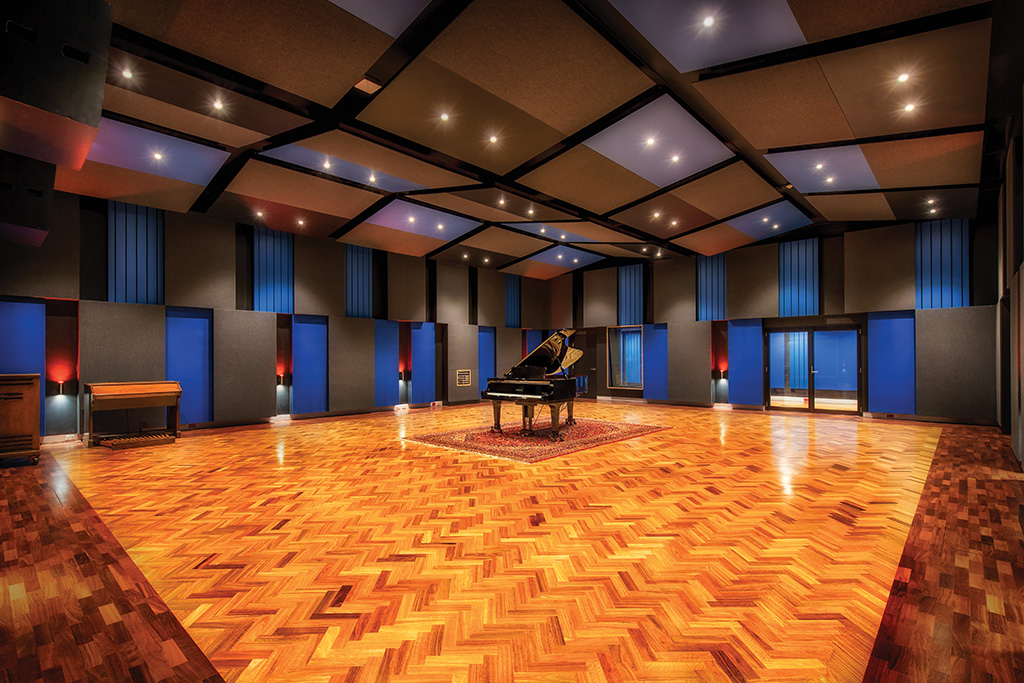

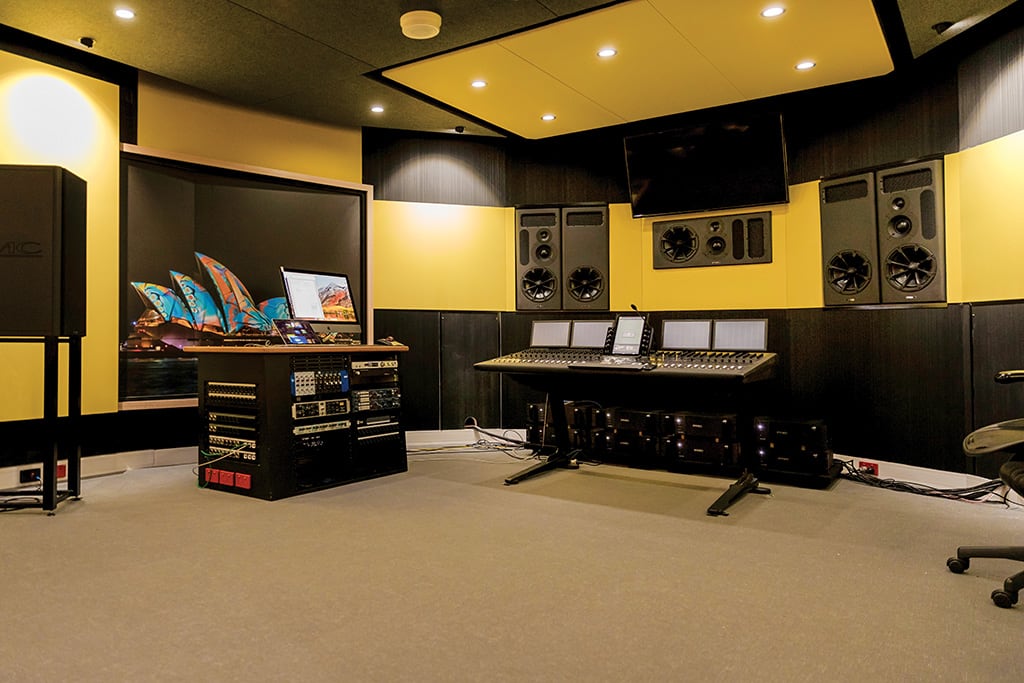



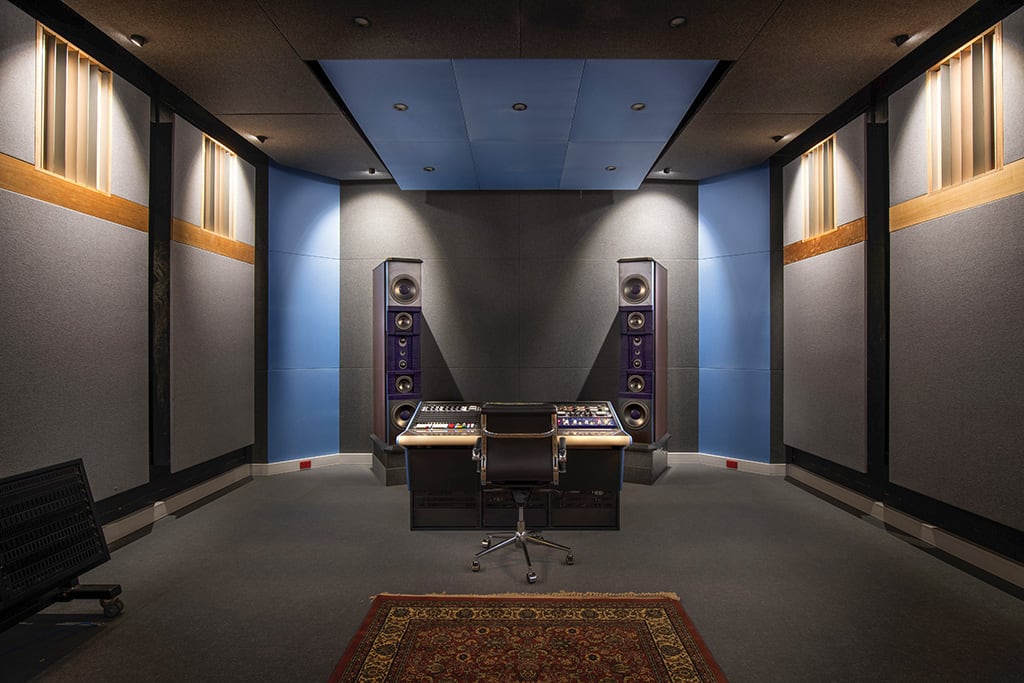
LEAVING ROOM TO MOVE
While getting the room as theoretically sound from the get-go is important, Veith knows there’s always some deviation from the models, whether it’s due to materials, construction, or some other human factor. To compensate, he always designs in the ability to tune the room when he arrives onsite. In Studio 1, while the front wall is completely solid, the rear wall is heavy on treatment. He designed tuneable Helmholtz resonators into the corners along with broadband low frequency absorption. In the rear wall are ‘Helmfusers’, which are high frequency diffusors with holes in-between the sheets that feed cavity resonators tuned between 50 and 100Hz. He also uses heavy foil resonators to really control the low end of the room, and other low frequency absorbers above the windows on both sides of the room. “If you have a room made out of plasterboard walls, it helps a little bit with low frequency absorption, but here it’s a very solid wall,” said Veith. “On the other hand, with a solid wall you can control it very well inside with the acoustic elements.
“The tuneable Helmholtz resonator is like a Formula One addition. We only use those in rooms at the top class, only in the frequency range between 25 and 50Hz, and we always have to tune them on site. We can’t pre-calculate it well enough because maybe the resonant frequency is correct, but the simple act of moving it into a room and placing it into a corner changes the tuning of the room. The other concern is the decay of the Helmholtz resonators. With all these active resonators you have to be really careful otherwise you end up having a resonator with a decay which is longer than the decay of the room. Then you hear the resonator, which we don’t want.”
Veith doesn’t have a trademark name for his type of acoustic design, other than building it around the general concept of a Reflection Free Zone, his goal is to simply work with the room, the budget and the speakers. “I always say we have a toolbox with which we work; simulation programs, different absorbers and approaches,” he said. “We try to do the best for the room that we can in different situations. Maybe in one room it’s better to have free-float monitoring and another room we have soffit-mounted monitoring. I’m not totally fixed on one approach. I always have to find out what possibilities we have, the budget and a lot of factors, then I have to make my decisions to get the best results.”
Veith was in the final tuning process when AT got a preview tour. Although Veith had just stepped off a long haul flight the day before, it was all smiles; he was very happy with the balance of the room when he first walked in. “I would say we are already 99% there. So now the fun begins to tweak and improve it even a little bit more.” There’s no magic trick to the final part, just lots of listening, measuring, listening and measuring. “You hear things, then you find it in the measurement, and vice versa. Maybe you do something and it doesn’t sound right, so you go back. You always have to be very careful when making big changes.”
Veith’s go-to listening CD is Back on the Block by Quincy Jones. “I’ve just heard it so many times, I’m so used to it. When I’m at the point where I’m happy, it’s like I feel at home. I use some for stereo image and some are for low end frequencies. I always want to change to a few new songs, but I have to find time to do it.”
301 REASONS
While Misner might not give them the credit, there are some other world-class facilities in Australia that happily cater for a coterie of international clientele. However, there’s no other studio in Australia like Studios 301 at the moment. The sheer number and variety of studios; the uncompromised acoustics; the impeccable PMC monitoring throughout; and a 200sqm-plus live room.
Still, what does it say about the Australian music industry when it’s best recording studio is a charity case?
Well, while Misner may have dropped a wad of cash building a superlative studio, the boots on the ground, daily grind will have little to do with him when he returns home. Spending the last couple of months watching the studio come together, there’s a palpable sense of relief in the air as some of Australia’s best engineers and producers have finally been able to come ‘home’ again. After a year being split up all over Sydney, the team is finally reassembled and energised to get to work in rooms that will allow them to do their best work yet.
Mastering engineers Steve Smart, Leon Zervos, Andrew Edgson, Ben Feggans and Harvey O’Sullivan are all settling into the sound of their purpose-built suites and PMC monitoring. Vocal producer extraordinaire Simon Cohen has staked out his turf in Studio Four. Head assistant engineer Owen Butcher is already busy running orchestral sessions. Steve Crane is installing the final touches, and GM Ron Haryanto and his team are busy introducing old friends to the new facilities. It’s not just about building a world-class studio; the aim is to provide six-star service and quality, whether the session is for one day or two months. They couldn’t have any better start than the new Studios 301.






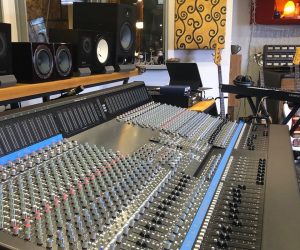



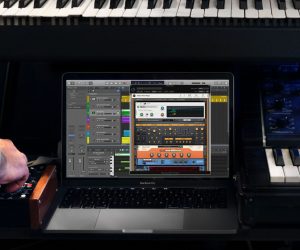

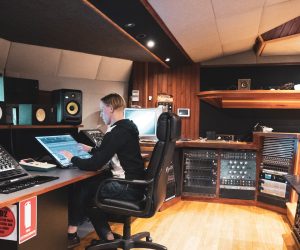



RESPONSES